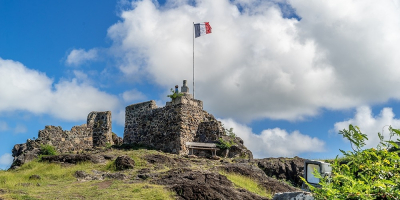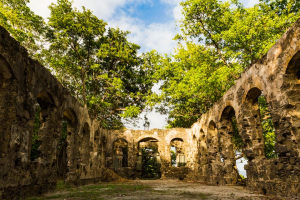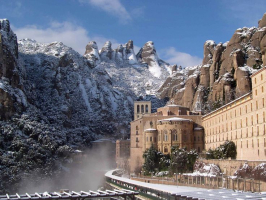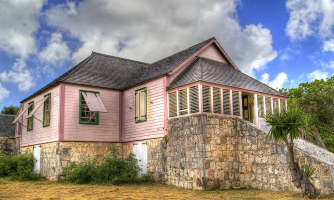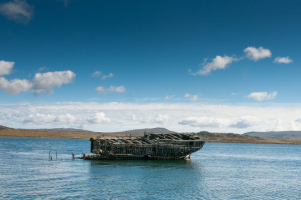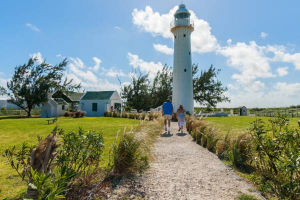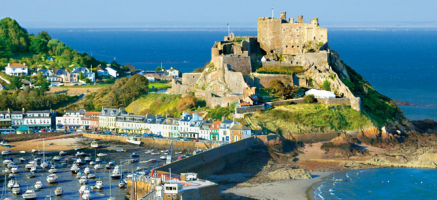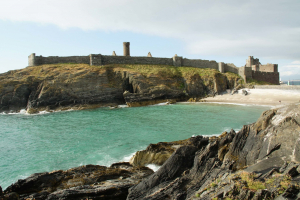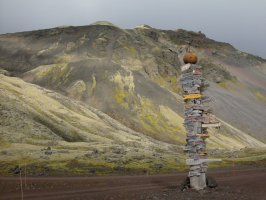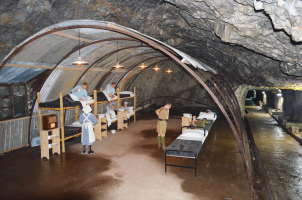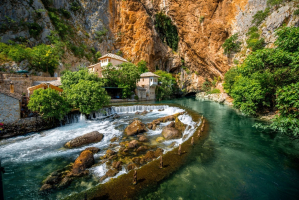Top 5 Most Beautiful Historical Sites in Saint Helena, Ascension and Tristan da Cunha (UK)
The remote islands of Saint Helena, Ascension and Tristan da Cunha appear only as blobs in the ocean, hiding all their fascinating treasures. It is not only a ... read more...place with beautiful beaches, but also a place with a long history and historical places with ancient beauty. Toplist's article will introduce you to the most beautiful historical places in St Helena Island, Ascension and Tristan da Cunha.
-
The Saint Helena Museum is located in the British Overseas Territory of Saint Helena in the south Atlantic Ocean. On two stories, it houses a comprehensive collection covering the island's naval, military, and social history. There's also a gift and pamphlet shop, as well as a gallery for temporary exhibits.
The Saint Helena Heritage Association is in charge of the museum. It is housed in a late-18th-century stone edifice, previously the ancient power station, at the foot of Jacob's Ladder, a hillside staircase downstream of Jamestown, Saint Helena's capital. Governor David Hollamby declared it open on May 21, 2002, the one-year anniversary of the island's discovery. The museum is one of two on the island; the other is the Longwood House, where Napoleon Bonaparte lived when imprisoned in St Helena.
The St Helena Museum began in 1854 with the founding of the St Helena Museum, which had a sea snake and a pterosaur among its exhibits. Over the next century, a number of minor museums sprang up all over the island, including at Plantation House, where pieces from Napoleon's House at Longwood were displayed, and eventually the Longwood House was turned into a comprehensive museum. A genuine St Helena Museum did not begin to take shape until November 1979, when the St Helena Heritage Society was founded, and on May 23, 1980, the Heritage Society established a museum on Broadway House. The Museum's collection swelled over the next 20 years, eventually surpassing Broadway House and becoming sleazy and unmanageable.When you come to the museum, you will be amazed at the layout and architecture here. The longer you stay in St Helena, the more drawn you will be to its history, politics, and culture. The museum then is the perfect place to soak, ponder and reflect as it has a plethora of artifacts and displays that celebrate pretty much every conceivable aspect of island life since it was discovered. appeared in the early 16th century. That is the beauty of a long history, the beauty that has been hidden for hundreds of years. That's why the Saint Helena museum deserves to be on the list of most beautiful historical sites in Saint Helena, Ascension and Tristan da Cunha.
Location: Jamestown, Saint Helena, Ascension, and Tristan da Cunha.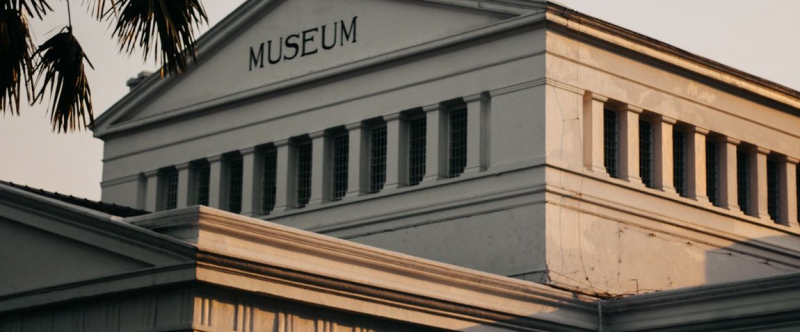
Photo: https://pickvisa.com/ 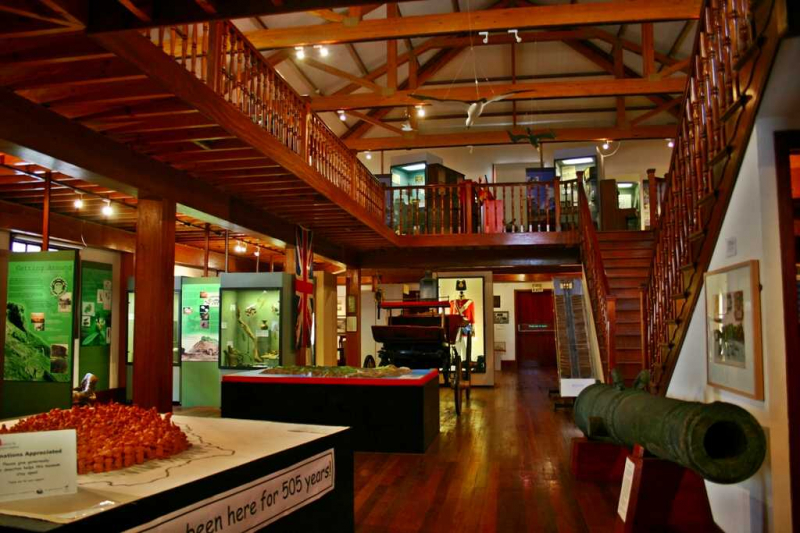
Photo: http://www.sthelenaisland.info/ -
Built-in 1735 on the southwest corner of 51st Avenue and Broadway, the former Saint James Church is Elmhurst's oldest surviving structure and the city's second-oldest religious structure still standing. It is a unique Colonial mission chapel, administered by King George III, that retains its early 18th-century rectangular design, wooden shingles, arched windows, and wooden frames. hefty. The main entrance was moved from the south side to Broadway's face in 1772, and the structure was lengthened.
The parish is home to Bishop Benjamin Moore, president of Kings College (later Columbia College), and Bishop Samuel Seabury, Jr. the first American Episcopal Bishop. It was also a place of worship for British officers and warriors throughout the Revolution. After a period of expansion, the parish erected a new church a block away in 1848, and the Old Saint James Church became the chapel and subsequently the parish hall. It was refurbished and changed over the years until it was restored to its late-nineteenth-century look in 2004. Old St. James is a New York City Personal Landmark and is on the State and National Registers of Historic Places.
Who wouldn't want to take a photo in front of the Southern Hemisphere's oldest Anglican Church? The church is located near the Castle in Jamestown. Its architectural design is a work of art that you'll want to photograph and show off to your friends. Saint James Church, which was completed in 1774, gives the appearance of an ancient structure. With that distinct beauty and long history of civilization, the ancient Church of Saint James deserves to be on the list of the most beautiful historical sites in Saint Helena, Ascension and Tristan da Cunha.
Location: 51st Avenue and Broadway
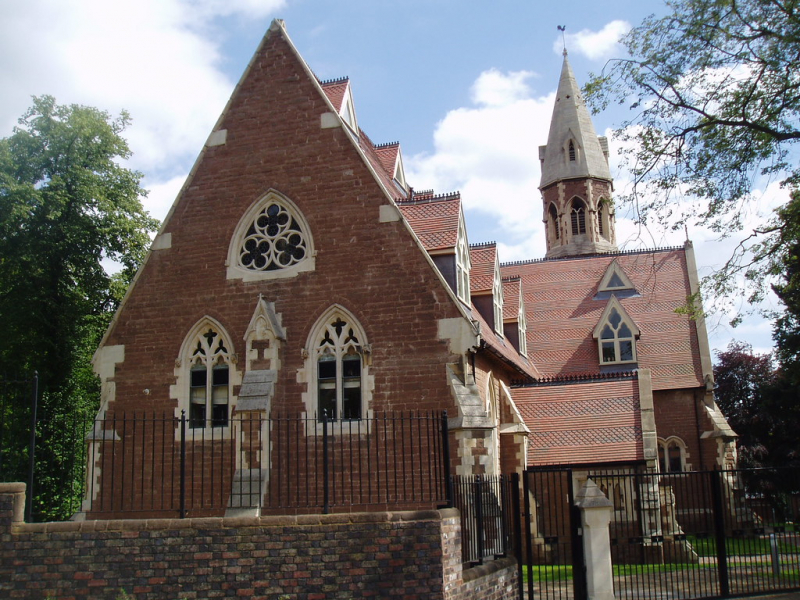
Photo: https://live.staticflickr.com/ 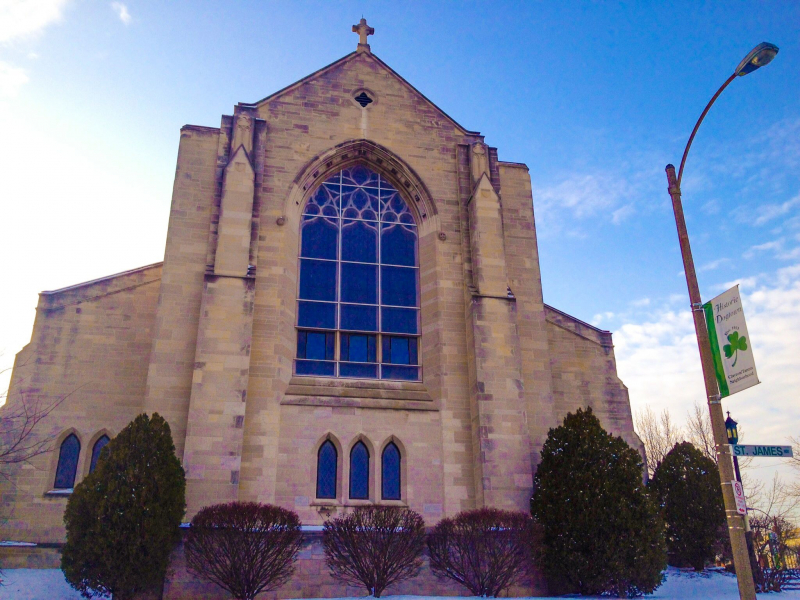
Photo: https://i.pinimg.com/ -
Longwood House is a palace on St. Helena that served as Napoleon Bonaparte's last abode during his exile on the island of Saint Helena from December 10, 1815, until his death on May 5, 1821. Longwood "was once a farm owned by the East India Company and later granted to the Deputy Governor as a country home." In 1815, it was converted for Napoleon's usage. The British administration soon determined it was unsuitable as a residence for the former Emperor and his entourage, and built a new house for him nearby, which was never used, at the time of his death. Governor Sir Hudson Lowe requested to Lord Bathurst in February 1818 that Napoleon be relocated to Rosemary Hall, an existing residence in a more favorable area of the island, shielded from the wind and shade, as Napoleon preferred. However, following General Gourgaud's discoveries in London, Lord Bathurst decided that keeping Napoleon in Longwood, where an escape was more difficult, was a better idea. The new mansion was not completed until October 1818, three years after Napoleon's arrival on the island. The National Archives of France holds Napoleon's will, which he wrote at Longwood House.
Standing in the middle of a hill full of wildflowers, like a green prairie, Longwood House becomes even more beautiful in everyone's eyes. Not only natural beauty, but Longwood House also wears the color of the timeline, which is historical beauty. With those two beauties, Longwood House deserves to be on the list of themost beautiful historical sites in Saint Helena, Ascension and Tristan da Cunha.
The French government still maintains Longwood House and Napoleon's original grave as historical monuments. Because of the long-term impacts of the deadly damp and termite invasion, most of Longwood House has been reconstructed. A duplicate of arsenic wallpaper has long since replaced the original.
Location: Longwood, St Helena, Ascension, and Tristan da Cunha STHL 1ZZ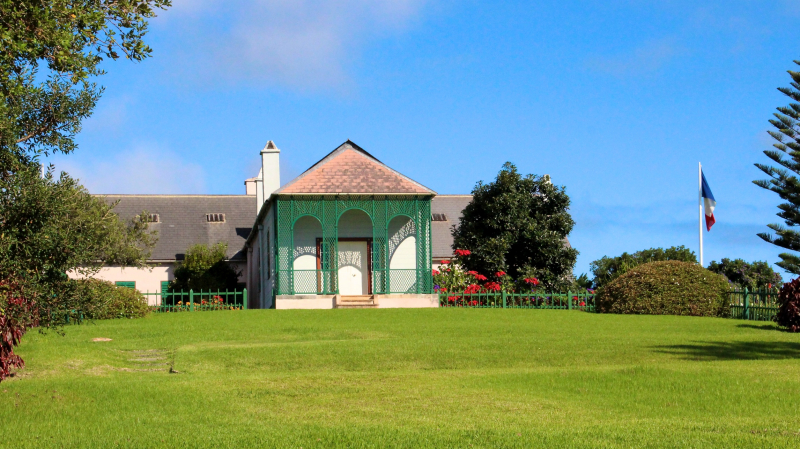
Photo: http://www.mrodenberg.com/ 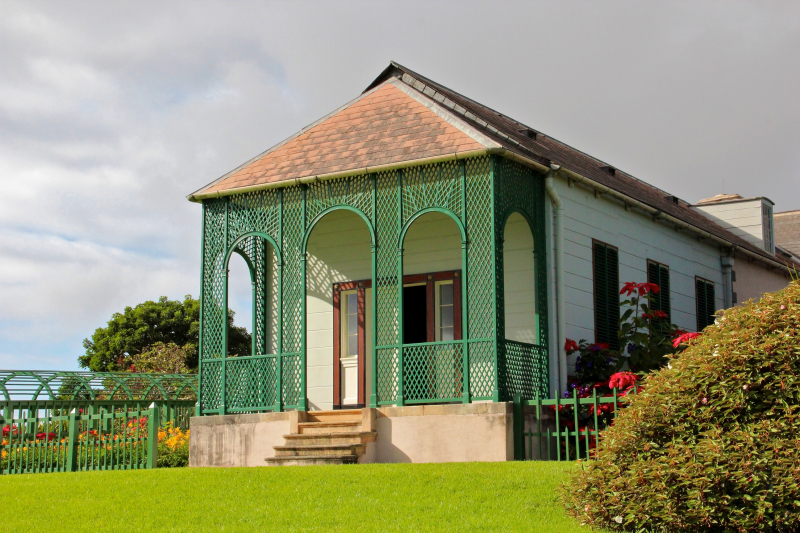
Photo: http://www.mrodenberg.com/ -
Plantation House is situated at the top of Young's Valley on a large slope facing northwest. The main center block of the Plantation House is two floors tall, with seven bays and a central patio. Slats, balustrades, and balustrades adorn the facades, which are all assembled and closed. Various modifications have been made to the rear launch wings. The house's interior has well-kept rooms with pressed zinc ceilings.
There are 35 rooms in the home (although previous writers claimed there were 62!). There are 24 living rooms and 11 storage rooms, among other things. As it has always been the Governor's job to entertain a large number of guests, the dining room is a massive 6.4mx10m space. Governor Lowe built the library in 1816, and it now houses over 2,000 titles. Surprisingly, most of the guest rooms have names engraved on a bronze plate on the door. 'Governor's Room,' 'Admiral Room,' 'General's Room,' and 'Baron's Room,' among others, but also 'Blue Room,' 'Pink Room,' and others. After an 1838 visit by Prince William Henry Frederick of the Netherlands, there was allegedly a 'Prince of the Orange Room,' but no one remembers which room it was. These places have sparked a lot of debate. Governor Grey-Wilson had them nailed to the door.
Governor Lowe regularly dines for at least 60 people, while the dining room currently seats 25 people. The room's chandelier came from Longwood House and was moved to Plantation House after Napoleon's death. All of St Helena's first governors resided and worked at the Castle. The area known as 'The Plantation' was nothing more than a farm, or 'plantation,' to feed the slaves and provide the Governor's table. In the 1670s, the road to The Plantation was the first to be completed outside of Jamestown. Governor Anthony Beale owned the first Government House on the site, which was transferred to the East India Company in 1679. For several years, council meetings were held at this location.
By 1711, Governor John Roberts had ordered the construction of a more suitable edifice, but it was allowed to fall into disrepair by his successor, Governor Benjamin Boucher, who was given permission to depart the island when he left and claimed to have brought everything that could be moved. Locks and keys are among the services he receives. The structure was reported to be in need of repair in 1717, with the roof possibly collapsing. The East India Company erected Plantation House as we know it today in 1791-2 as a country or summer residence for the Governor (the castle later became the residence of the 'town'), and Governors have continued to utilize the property since then. Governor Alexander Beatson (1808-1813) made considerable additions to the garden, and his successor, Governor Mark Wilks, constructed and greatly expanded the house in 1814. The expansion to the house was erected by Governor Hudson Lowe (Napoléon's famous grandfather), and presently includes the Library, Billiards Room, Kindergarten, Kitchen, Office, Coaching House, and Stables. The Governor's trip to the Castle today takes only a few minutes in the official automobile, but it used to take a little longer and was more extravagant.
A white building stands tall in the middle of a green hill, what is more, beautiful when the colors in the picture blend together to create the most perfect, most beautiful picture. Not only that, but Plantation House also has a long history through the tempered of historical events, which is historical beauty. This makes Plantation House worthy of being on the list of the most beautiful historical sites in Saint Helena, Ascension and Tristan da Cunha.
Location: STHL 1ZZ, St Helena, Ascension, and Tristan da Cunha
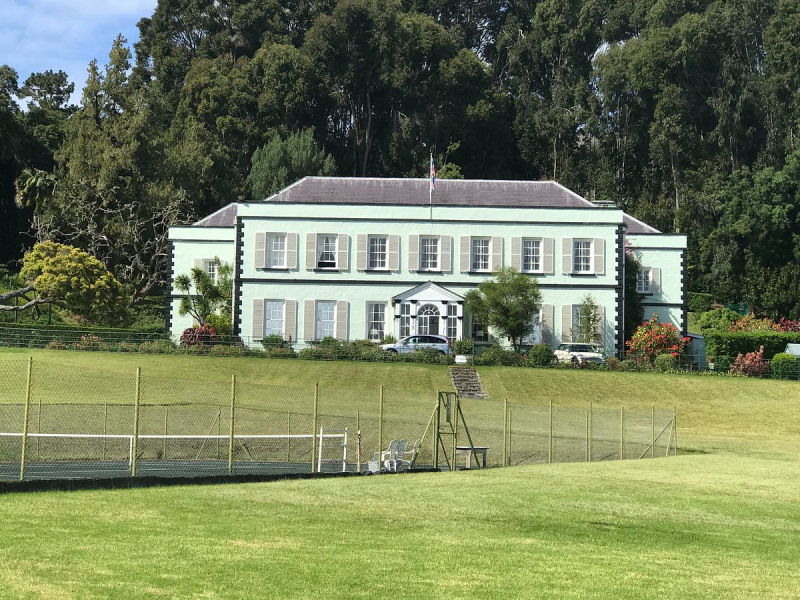
Photo: https://www.tripadvisor.com/ 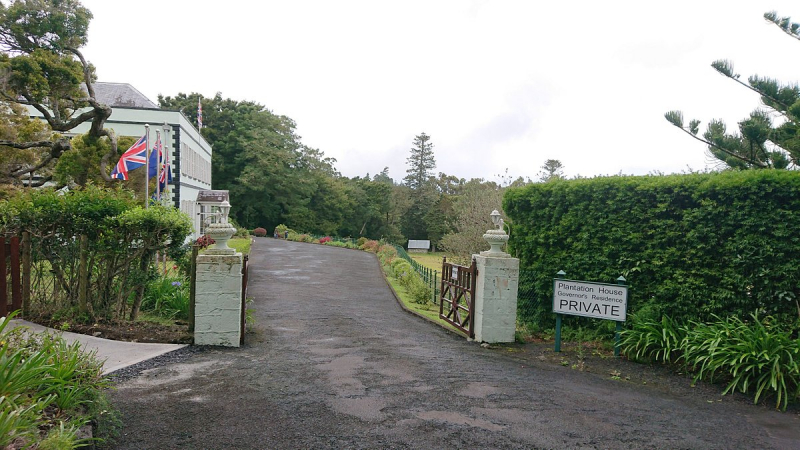
Photo: https://www.tripadvisor.com/ -
Fort High Knoll was a redoubt fort built by the British East India Company on the island of Saint Helena, a British overseas territory in the South Atlantic. High Knoll lies a mile south of historic Lower Jamestown and reaches 584 meters (1,916 feet) above sea level. It first opened to the public on December 18, 2010, and has since become a popular tourist destination, particularly for cruise ship passengers arriving during the summer (January to April).
It encircled Jamestown and was created as a loan to the island's residents to aid in the defense of the colony from future French invaders. The original fort was constructed in 1799 as a circular tower, sometimes referred to as the Martello tower, and was modeled after the tower in Simon Town, South Africa. The tower's function was to protect the battery's back approaches at Ladder's Hill. The Royal Engineers reconstructed the High Knoll Tower in 1874, and it was incorporated into the current construction.
During the Second Boer War, the Fort housed South African Boer prisoners for a short time. Broadbottom, No. 1 Deadwood, No. 2 Deadwood, and Jamestown all had POW camps.) Later, the Fort was used to quarantine chickens, sheep, and cattle imported from other countries. NASA had a technician at the fort in the mid-1980s who ran a tiny tracking station. The Citadel was the name given to High Knoll Fort before it was rebuilt in the late 1800s. It is the island's largest, most visible, and most comprehensive fortification and military complex. The Saint Helena National Trust has started restoration work on the fort. It is classified as a Grade I structure.
You will have a new perspective when you come to High Knoll Fort, its beauty will leave you in awe. A white house stands tall in the middle of a green hill with a spectacular view of the island. The picture is so beautiful when everything blends together, this will be a highlight of your trip when visiting High Knoll Fort.
Location: St Helena Island.
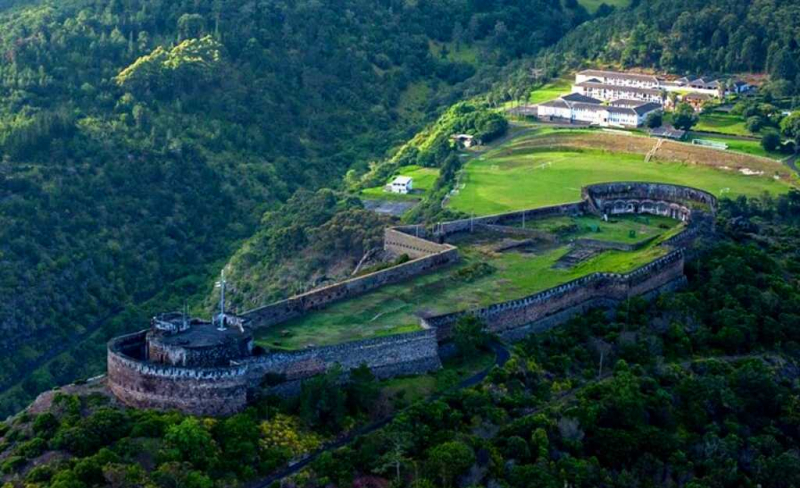
Photo http://sainthelenaisland.info/ 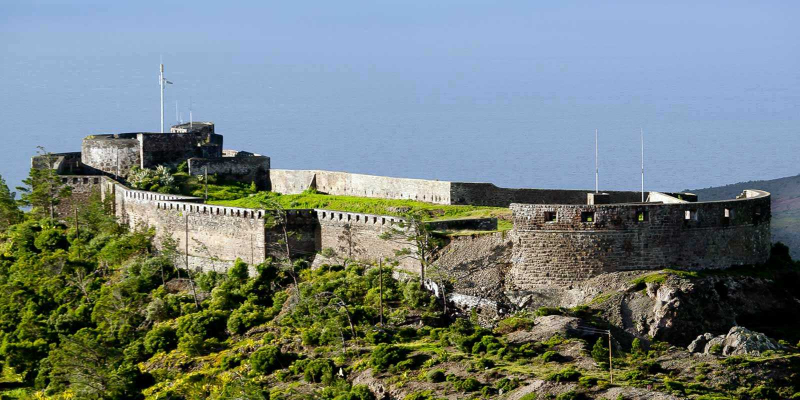
Photo: http://sainthelenaisland.info/








